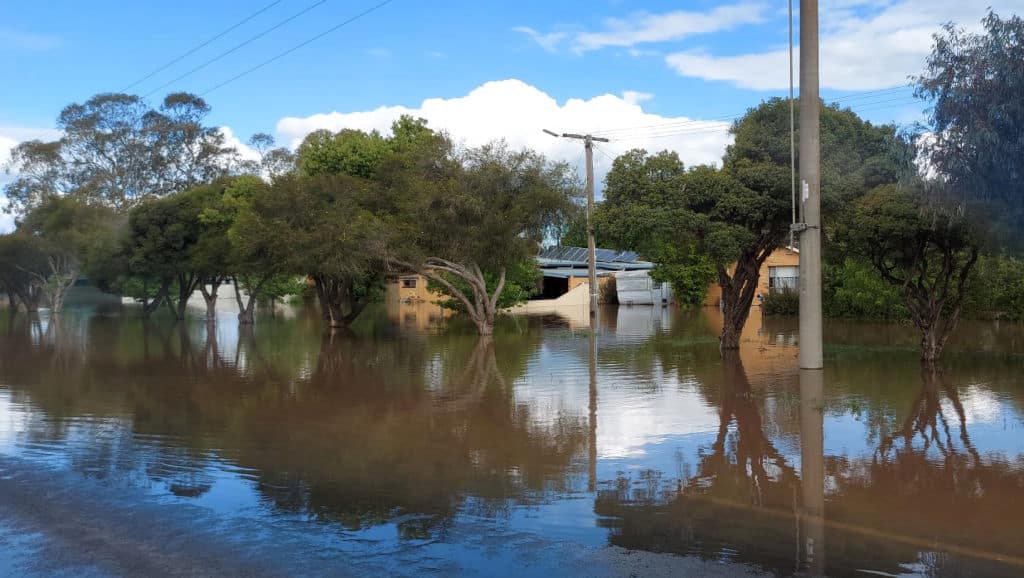What Does the End of La Niña Mean for Global Weather Amidst the Climate Crisis?

 Why you can trust us
Why you can trust us
Founded in 2005 as an Ohio-based environmental newspaper, EcoWatch is a digital platform dedicated to publishing quality, science-based content on environmental issues, causes, and solutions.
The rare “triple dip” La Niña that worsened the U.S. southwest’s drought, harried two busy Atlantic hurricane seasons and poured into record-breaking rainfall in Australia is finally over.
The National Weather Service’s Climate Prediction Center issued its final advisory for the outgoing cold phase of the El Niño Southern Oscillation (ENSO) cycle March 9.
“La Niña has ended and ENSO-neutral conditions are expected to continue through the Northern Hemisphere spring and early summer 2023,” the center announced.
What does this mean? The ENSO cycle describes whether the waters in the central and eastern tropical Pacific Ocean are warmer than average (El Niño), cooler than average (La Niña) or neutral, ie. average. Either warmer or cooler Pacific temperatures can influence weather around the world. In the U.S., for example, El Niño is associated with dryer, warmer weather in the northern states and more rain and increased flood risk in the Southeast and along the Gulf Coast, The New York Times explained. La Niña, on the other hand, typically brings dryer, warmer weather to the south and wetter weather to the north.
The cycle typically rotates every two to five years, but this year was unusual because this La Niña, which began in September 2020, lasted for a third Northern Hemisphere winter, according to The New York Times and BBC News. However, it is now over, meteorologists declared, because sea surface temperatures in the monitoring area were only 0.2 degrees Celsius below the long-term average, as Emily Becker of the University of Miami wrote in NOAA’s ENSO blog. During a La Niña period, sea surface temperatures are 0.5 degrees Celsius below average.
Forecasters predict that conditions will now remain neutral through the spring, but it is still unclear when they will switch to El Niño. Why does this matter?
“If we can anticipate an El Niño, we can anticipate an increased likelihood of its impacts on weather and climate,” Becker explained. “In contrast, a continuation of neutral conditions means the tropical Pacific Ocean will not be an actor on the world’s climate stage. The lack of El Niño or La Niña means that there is no seasonal-scale influence from the Pacific to push around the global atmospheric circulation and influence seasonal climate patterns.”
The outgoing La Niña, for example, has been tied to the most and third-most active Atlantic hurricane seasons in 2020 and 2021, drought in East Africa and the U.S. and record-breaking rainfall followed by extreme flooding in eastern Australia in 2022, BBC News and The New York Times reported. There is an approximately 60 percent chance that the neutral pattern could shift to El Niño by the fall, according to Becker. If it does, this could build on the climate crisis to make global temperatures even warmer.
“The first triple-dip La Niña of the 21st century is finally coming to an end. La Niña’s cooling effect put a temporary brake on rising global temperatures, even though the past eight year period was the warmest on record,” World Meteorological Organization Secretary-General Professor Petteri Taalas said in a March 1 update. “If we do now enter an El Niño phase, this is likely to fuel another spike in global temperatures.”
2016, which was an El Niño year, was the warmest on record, and there is a 93 percent chance that its record will be broken by 2026. In addition, there is a 50 percent chance that global temperatures will temporarily overshoot the 1.5-degrees-Celsius-of-warming temperature goal enshrined in the Paris agreement.
There are some ways in which El Niño could lead to gentler weather, however. It typically acts against hurricanes because it increases wind shear, Colorado State University meteorologist Philip Klotzbach observed on Twitter.
However, the climate crisis is also making the impact of the ENSO cycle harder to predict.
“The old La Niña playbook and the old El Niño playbook don’t seem to be as reliable as they used to be,” adjunct professor of meteorology at San Jose State University Jan Null told The New York Times.
Subscribe to get exclusive updates in our daily newsletter!
By signing up, you agree to the Terms of Use and Privacy Policy & to receive electronic communications from EcoWatch Media Group, which may include marketing promotions, advertisements and sponsored content.

 233k
233k  41k
41k  Subscribe
Subscribe 




